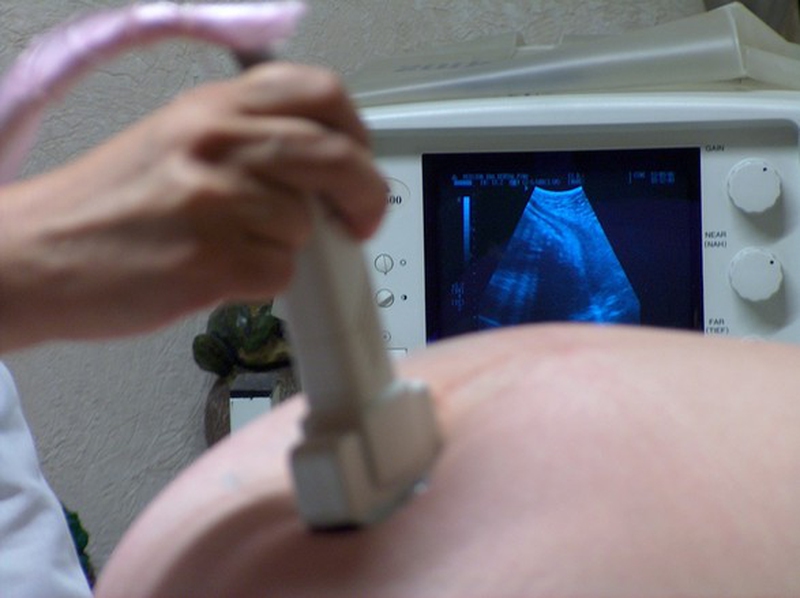The cervix is the lower, narrow section of the uterus that leads into the vagina. In a woman who is not pregnant, the cervix remains small and only serves to release menstrual blood and allow sperm to enter the uterus for potential impregnation. When a woman does become pregnant, the cervix releases secretions and forms a “mucus plug,” a kind of barrier that seals up the cervix.
Throughout a regular pregnancy, the cervix stays in this closed, narrow position until the end of the third trimester. As time for the birth gets closer, the cervix starts to get soft, grow shorter and also expand as the body naturally prepares itself for childbirth. Though if you have a weak cervix in pregnancy, you have what is called cervical insufficiency.

What Is Cervical Insufficiency?
When you have cervical insufficiency, that means the cervix has started the phase of softening and opening up prematurely. If this happens too early, it can cause you to go into labor far too soon, usually between 16 and 24 weeks. This typically causes a woman to have a miscarriage or a baby born very prematurely who may be sick. Thankfully, cervical insufficiency is quite rare and typically only happens in about one out of every 100 pregnancies. But it is worth knowing who is at risk for cervical insufficiency and how to prevent the tragic consequences of the disorder going undiagnosed.
Risk Groups
You may be more at risk for cervical insufficiency if you:
Have had a cone biopsy/LEEP done: A cone biopsy is a type of cervical biopsy that is done to remove abnormal cervical cells that could lead to cancer. A LEEP also removes abnormal cells by using a thin wire loop that is carrying an electrical current.
Had a previous cervical injury: This may include damage done during a previous birth, miscarriage or other procedure.
Had previous miscarriages in the first or second trimester or spontaneous premature deliveries.
Have a uterine abnormality: A bicornuate uterus, where the uterus that has two horns and a heart shape, can also affect the cervix.
Have had cervical sufficiency in past pregnancies.
How to Know If You Have Cervical Insufficiency
If you have a weak cervix in pregnancy, it is possible that you will not have any warning signs or symptoms as your cervix starts to weaken and dilate. But you may experience some slight pain or discomfort, or have some spotting as the cervix does start to open up. This may happen over a few days or weeks, and start between 14 and 20 weeks. The more warning signs include:
● Pressure in the pelvic area
● Back pain
● Slight stomach cramps
● A difference in vaginal discharge
● Mild vaginal bleeding
Cervical insufficiency is not something that your doctor will look for in a routine pregnancy checkup, so unfortunately it does not usually get diagnosed until a miscarriage in the second or third trimester has already occurred. If a woman has one of the risk factors for a weak cervix in pregnancy as listed above, they'd better be examined before getting pregnant or in the very early stages of pregnancy with an ultrasound or a pelvic exam performed by a doctor. Ultrasounds are able to measure the length of the cervix and how wide of a cervical opening there is. Pelvic exams let the doctor examine the cervix themselves and can tell if there is any type of softening or opening happening.
How to Deal With Cervical Insufficiency
Progesterone supplementation
If you are someone with a history of multiple premature births, your doctor may want you to receive weekly injections of a type of progesterone called hydroxyprogesterone caproate throughout your second trimester, which has been shown to reduce the risk of premature births. Research is still being done on this artificial hormone, and it has been shown to not be helpful in pregnancies with twins or more.
Serial ultrasounds
For women with a history of miscarriages, preterm births or previous cervical injuries, your doctor will likely want to perform ultrasounds on a more frequent basis. This may mean an ultrasound every two weeks starting at week 15 through week 24 of your pregnancy. This way, your doctor can tell if you have a weak cervix in pregnancy and perform steps to prevent a possible miscarriage or preterm birth.
Cervical cerclage
If you have a history of miscarriages and preterm births and are still less than 24 weeks pregnant, a procedure called a cervical cerclage could help prevent the outcomes of a cervical insufficiency. In a cervical cerclage, the cervix is closed with strong stitches that are removed during the last month of pregnancy or when labor starts. This procedure may even be done earlier if you’ve had multiple premature births. A cervical cerclage is not recommended for women carrying twins or more babies.
Bed rest
Though there is no clinical research showing the effectiveness of bed rest in reducing the chances for early birth in women with cervical insufficiency, it may be another prevention method recommended by your doctor as a safeguard. Bed rest can mean anything from sitting or lying down at all times to mostly sitting and lying down with occasional sedentary activity.
Kegels
These types of exercises help to strengthen your pelvic floor muscles. While also not scientifically proven effective, they can help ease vaginal birth and make post-birth recovery quicker. For practice, clench your muscles while you are urinating to stop the flow, and then release.
View All Comments /Add Comment